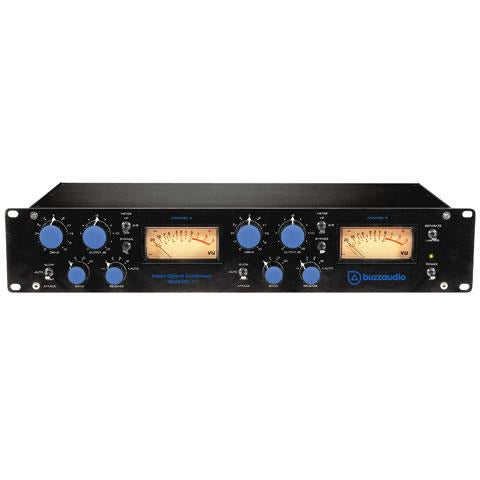Buzzaudio SOC 1.1 Stereo Opical Compressor
£1,950.00 ex. vat
Audio compressors that use a light source to control a Light Dependent Resistor (LDR) are not new, and indeed there are many classic optical compressor designs. The design goal of the SOC-1.1 was to further enhance the attributes of optical compression to provide the user with alot more functionality as well as improve the compressor response to real world audio signals. We have carefully examined the characteristics of the LDR and developed a truly unique process to control it. This process we call the Differential Drive Side Chain topology (DDSC).
The DDSC circuit separates the positive and negative audio waveform in the compressor side chain and processes them in identical but electrically opposite paths. The resulting control signals are applied to two separate LED (light emitting diode) and LDR elements of our own design, one for positive, the other for negative signals. What this achieves is a compression characteristic that is more "in tune" with the audio source because the attack and release time settings are applied independently to the positive and negative elements of the signal, not just to the combination.
As far as we are aware, no other audio compressor in the market today employs this technique. The benefits of the DDSC design are most apparent when compressing low frequencies such as bass guitar and kick drums, but the SOC is equally at home on just about any audio source you can throw at it.
Buzz Audio SOC1.1 Features
- Controls for Attack, Release, Ratio, Drive and Output Levels.
- Unique Differential Drive Side Chain design
- Big knobs, large LED backlit VU meters (no bulbs to change).
- Separate power supply regulators for audio/sidechain sections.
- Each channel individually power regulated.
- Auto bypass/mute relay when power lost.
- Electronically balanced inputs and outputs on XLR.
- Gain reduction metering that doesn't drift.
- New generation opamps utilized in the audio path.

